 Parkinson’s disease is most often explained as a genetic disease, despite only a small percentage of people suffering from Parkinson’s having the Parkinson’s gene.
Parkinson’s disease is most often explained as a genetic disease, despite only a small percentage of people suffering from Parkinson’s having the Parkinson’s gene.
How can genetics explain that Parkinson’s cases have more than doubled in the last 30 years, whereas our genes have remained pretty much the same?
A new study in The Journal of Parkinson’s Disease decided this question needed to be answered. The answer was terrifying.
Apparently, there is a cleaning product we’re all exposed to that drastically increases your risk of Parkinson’s disease. Avoid this cleaning product, and you may halt your diseases or even see drastic improvements.
In reviewing the scientific literature, the researchers noticed that some studies mimicked the symptoms of Parkinson’s by exposing animals to trichloroethylene (TCE).
To analyze its effects on humans, they reviewed the literature again. While the results seemed to indicate a relationship, much more research needs to be done.
This is what they found.
-
1. In 1969, the first study reported Parkinson’s in a 59-year-old man who had worked closely with TCE for more than 30 years.
2. In 1999, another study found Parkinson’s in a 37-year-old woman who was exposed to TCE while cleaning houses and working in the plastics industry.
3. In 2008, scientists found Parkinson’s symptoms in 17 of 30 industrial workers who had used TCE to clean and degrease metals. The three who worked closest to an open TCE vat had full-blown Parkinson’s.
4. In 2012, researchers studied twin pairs and discovered that twins with TCE exposure were 500% more likely to develop Parkinson’s later.
While these studies are not large enough to support strong conclusions, they certainly suggest a relationship that should be urgently explored.
The biggest risk is to manufacturers that work directly with TCE, but there is also a lot of TCE in the environment due to industrial waste. The EPA has classified TCE as a hazardous substance, but it is still used and will probably take decades to remove from our surroundings.
TCE is used to clean and remove grease and other contaminants from metal parts and equipment, including the circuit boards and semiconductors in your electronic devices. It is a common solvent used in the dry-cleaning industry to clean fabrics and textiles, and it is a spot cleaner for carpets and upholstery.
Even more concerning is TCE’s use in food and pharmaceutical production: it is used to extract various ingredients from products. It can, for example, be used to extract caffeine from coffee or active natural ingredients from plants.
This means that we are all exposed to trichloroethylene and are all at risk, even if we don’t work in manufacturing plants.

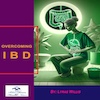 Overcoming IBD
Overcoming IBD Multiple Sclerosis
Multiple Sclerosis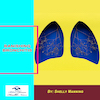 Banishing Bronchitis
Banishing Bronchitis Gum Disease Gone
Gum Disease Gone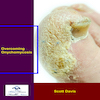 Overcoming Onychomycosis
Overcoming Onychomycosis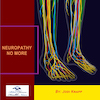 Neuropathy No More
Neuropathy No More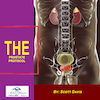 The Prostate Protocol
The Prostate Protocol Brain Booster
Brain Booster
 Ironbound
Ironbound
 Solution for Shingles
Solution for Shingles
 The Bone Density Solution
The Bone Density Solution
 The Ultimate Healing Protocol
The Ultimate Healing Protocol
 The Parkinson's Protocol
The Parkinson's Protocol
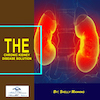 The Chronic Kidney Disease Solution
The Chronic Kidney Disease Solution
 Overthrowing Anxiety
Overthrowing Anxiety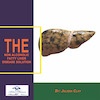 The Fatty Liver Solution
The Fatty Liver Solution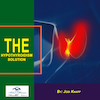 The Hypothyroidism Solution
The Hypothyroidism Solution
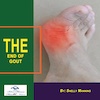 The End of Gout
The End of Gout The Blood Pressure Program
The Blood Pressure Program
 The Oxigized Cholesterol Strategy
The Oxigized Cholesterol Strategy
 Stop Snoring And Sleep Apnea Program
Stop Snoring And Sleep Apnea Program
 The Arthritis Strategy
The Arthritis Strategy The Vertigo & Dizziness Program
The Vertigo & Dizziness Program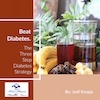 The 3-Step Diabetes Strategy
The 3-Step Diabetes Strategy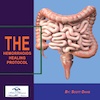 Hemorrhoids Healing Protocol
Hemorrhoids Healing Protocol The Erectile Dysfunction Master
The Erectile Dysfunction Master Weight Loss Breeze
Weight Loss Breeze The IBS Program
The IBS Program The Insomnia Program
The Insomnia Program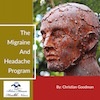 The Migraine and Headache Program
The Migraine and Headache Program The Neck Pain Solution
The Neck Pain Solution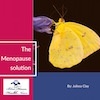 The Menopause Solution
The Menopause Solution The Ejaculation Master
The Ejaculation Master The TMJ Solution
The TMJ Solution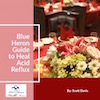 The Acid Reflux Solution
The Acid Reflux Solution The Fibromyalgia Solution
The Fibromyalgia Solution The Psoriasis Strategy
The Psoriasis Strategy